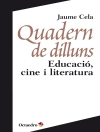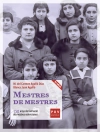Your guide to culturally and linguistically sustaining practices in your dual language classroom and school.
It’s time to set the record straight: Multilingualism is a tremendous asset that must be nurtured and valued and the most effective pathway to multilingualism is dual language education. Despite significant evidence attesting to the cognitive, social/emotional, and economic benefits of multilingualism, the majority of our classrooms and schools are monolingual.
Encouragingly, recent shifts in state policies have increased the demand for dual language programming in our schools. This increased momentum brings new challenges, including the need for more bilingually authorized teachers, high-quality instructional resources, and accurate assessment and accountability in the target languages of instruction. With contributions from ten experts in multilingual education, Breaking Down the Monolingual Wall outlines the systemic and pedagogical approaches necessary for successful multilingual and dual language programs. The book supports educators to:
- Shift the paradigm from one that is subtractive and deficit-based to one that is additive and assets-based
- Embed culturally and linguistically sustaining practices in their instruction
- Understand how to promote multilingualism in the context of teaching academic content
- Develop assessments as, for, and of learning in multiple languages.
- Lead high-quality dual language schools and programs
- Recruit and retain highly qualified bilingual educators
Offering a comprehensive overview of bilingual policies and historical context all educators should understand, Breaking Down the Monolingual Wall is an invaluable guide to creating dual language learning environments that build on the precious assets of our multilingual students and families.
Inhoudsopgave
Dedication
Acknowledgements
Publisher′s Acknowledgements
About the Authors
Foreword by Jan Gustafson-Corea
Chapter 1: From Subtractive Schooling Models to Dual Language Models that Lead to Linguistic and Cultural Equity
Chapter 2: From Culturally and Linguistically Subtractive to Culturally and Linguistically Sustaining Pedagogy
Chapter 3: From One Language to Biliteracy and Content in Two Languages
Chapter 4: From Monolingual Assessment to Assessment in Multiple Languages
Chapter 5: From Educator Collaboration in a Monolingual Setting to Collaboration in a Dual Language Setting
Chapter 6: From Leading in a Monolingual Program to Leading in a Dual Language Program
Chapter 7: From ‘One Size Fits All’ Workshops to Job-Embedded Professional Learning for Dual Language Teachers
Chapter 8: From Monolingual Policies to Dual Language Policies
Over de auteur
Sydney Snyder, Ph D, is a principal associate at Support Ed. In this role, Dr. Snyder coaches ML educators and develops and facilitates interactive professional development for teachers of MLs. She also works with the Support Ed team to offer technical assistance to school districts and educational organizations. Dr. Snyder has extensive instructional experience and has worked in the field of English language development forover 25 years. She started her teaching career as a Peace Corps volunteer in Guinea, West Africa. This experience ignited her passion for language teaching, culturally responsive instruction, and ML advocacy. Dr. Snyder is coauthor of Culturally Responsive Teaching for Multilingual Learners: Tools for Equity and contributing author to Breaking Down the Monolingual Wall. She served as an English Teaching Fellow at Gadja Mada University in Yogyakarta, Indonesia. She earned her Ph D in Multilingual/ Multicultural Education at George Mason University and her MAT in TESOL at the School for International Training. You can connect with her by email at Sydney@Support Ed.com or on Twitter at @Sydney Support Ed.












